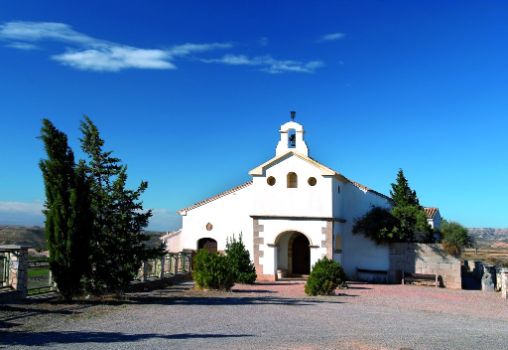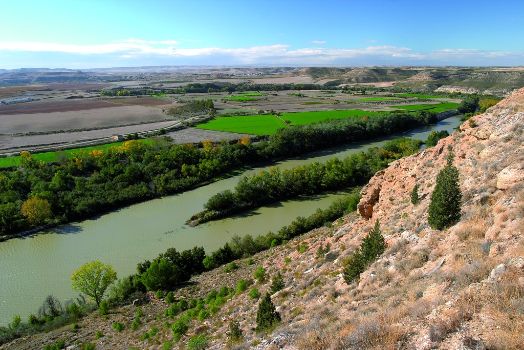Net of Natural
Trails

Stage 29.1: Alborge - Ermita de Montler - Sástago
Description
At the intersection where Section 29 accesses the town, the route leaves Alborge behind (161 m), taking the right fork (northeast) of the road to Bujaraloz during 1.5 km.
Past the Pozas Ravine, at a bend, the route strays from the paved road onto a dirt track on the right that soon reaches the river. This track follows the course of the meander formed by the Ebro, and crosses several streams. To cross Pino Ravine (the deepest), the route must first descend to a field and get back on the track along the upper edge.

Immediately after, the road leaves the riverbank behind and ventures into a new stream situated upstream. Here begins the climb to the shrine of Montler that is accessed from behind (3.3 km, 1hr). The shrine of Montler stands on edge of a ledge overlooking the Monegros plain in the central Ebro depression. It is therefore a terrific vantage point with a commanding view over the meanders, island, orchard and towns located along this whimsical river system. Several additions were made in the 18th century to this 13th century building. Various sheltering structures are distributed throughout the esplanade to protect the public at county fairs and pilgrimages. This place has been traditionally viewed as a waypoint on the pilgrimage route to Santiago that traverses the Ebro towards Sástago.
The route heads along a wide road that winds down the slope next to the front of the shrine, along the edge of the escarpment. It then crosses a spectacular wall-stone bridge over a ravine, and continues to descend to the riverside.
After crossing another gully, the track continues between the river and the hillside, until it reaches the A-221 and the bridge that leads to Sástago. This town, with 1,500 inhabitants, is the county capital. It stretches over the bottleneck created by the Ebro at the Montler meander. Amongst its most interesting features are two hydroelectric plants, two diversion dams (Noria and Rincón), lush islands, and the 19th century Palma castle or fort, known as Tambor. Also noteworthy are the knives with grips of mother-of-pearl from the Ebro's famous margarita clam, (Margaritifera auricularia), now in danger of extinction, or typical Aragonese hats made by traditional artisans. The Monastery of Rueda (11th-18th centuries) is also located within its municipal district, although it is closer to Escatrón (Section 30).
The bridge leads to San Roque Street, where Section 29 ends next to the school zone (146 m, 8.4 km, 2hr 10 min).
Sites of interest
Profile





